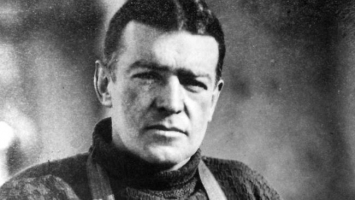Top 9 Interesting Facts About Ernest Hemingway
Ernest Hemingway was a literary titan of the twentieth century, transforming his lived experiences in multiple wars into rich prose. Here are interesting facts ... read more...about Ernest Hemingway.
-
This collection of interesting facts about Ernest Hemingway begins with a rather revealing tidbit about his childhood. It almost sounds slanderous to accuse someone as manly as Ernest Hemingway of ever wearing girls’ clothing, but it's true - even if it wasn't by choice. Ernest's mother had always wanted twins, so when Ernest was born only 18 months after his older sister, mummy dearest decided that was close enough: she began dressing Ernest up in Marcelline's old clothes, even though they were little girl's clothes—lacey white dresses with pink bows and the like. His mother soon began buying duplicates of everything and dressing her children in matching pink gowns and flowered hats. She referred to the children as her "sweet Dutch dollies" and even told strangers that they were her twin girls. To keep the twin fantasy alive, Grace pushed Marcelline back a year in school so that she and Ernest would be in the same grade. Oh, and his mother cherished the fantasy of Ernest as a little girl so much that she referred to him as "Ernestine" at times.
If you've ever wondered why the author emphasized masculinity so much, hopefully, this bit of trivia will help answer your question.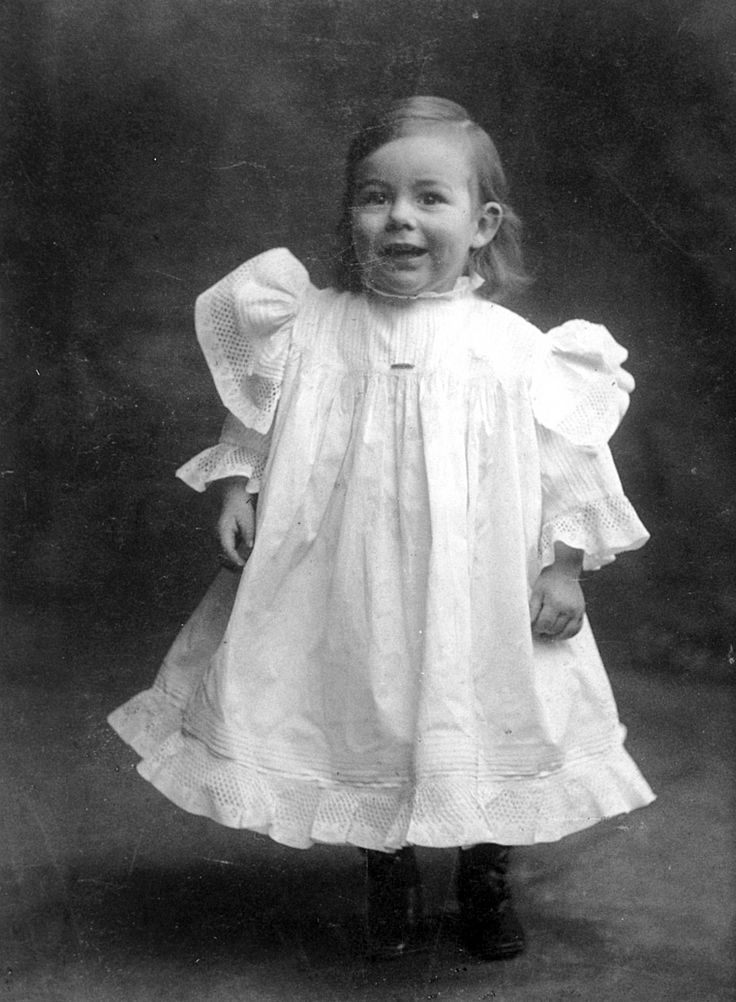
Photo: Pinterest - Ernest Hemingway in girls’ clothing 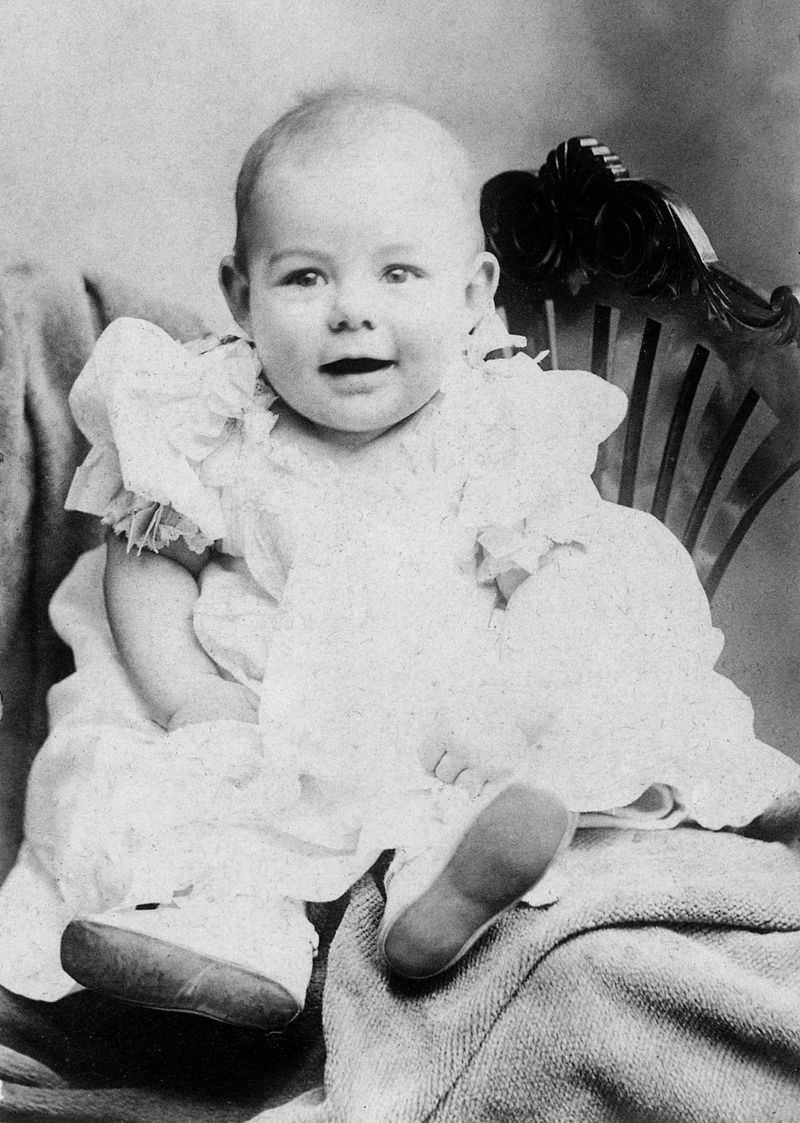
Photo: Encyclopedia of Trivia -
After leaving the United States, Hemingway traveled to Paris before being ordered to report to Milan. A short time later, he relocated to Schio, where he drove ambulances. On July 8, 1918, while delivering chocolates and cigarettes to soldiers at the front, Hemingway was seriously injured by fragments from an Austrian mortar shell. Despite being severely injured by the mortar and machine-gun fire, Hemingway worked to ensure the safety of his fellow soldiers by moving them out of harm's way. For his heroic actions, the Italian government later awarded him the Silver Medal of Military Valor. He received an Italian Silver Medal of Valor for his actions.
Hemingway recuperated in a hospital in Milan, where he met Agnes von Kurowsky, a nurse from Washington, D.C. She was six years Hemingway's senior, but he fell in love with her and planned to bring her home to Oak Park. Agnes did not accompany Hemingway as planned. Their relationship ended due to her involvement with an Italian officer.
The Italian Silver Medal of Valor was matched almost 30 years later when the United States awarded him a Bronze Star for his bravery while covering the European theater as a journalist during World War II. His work appeared in Collier's and other publications.
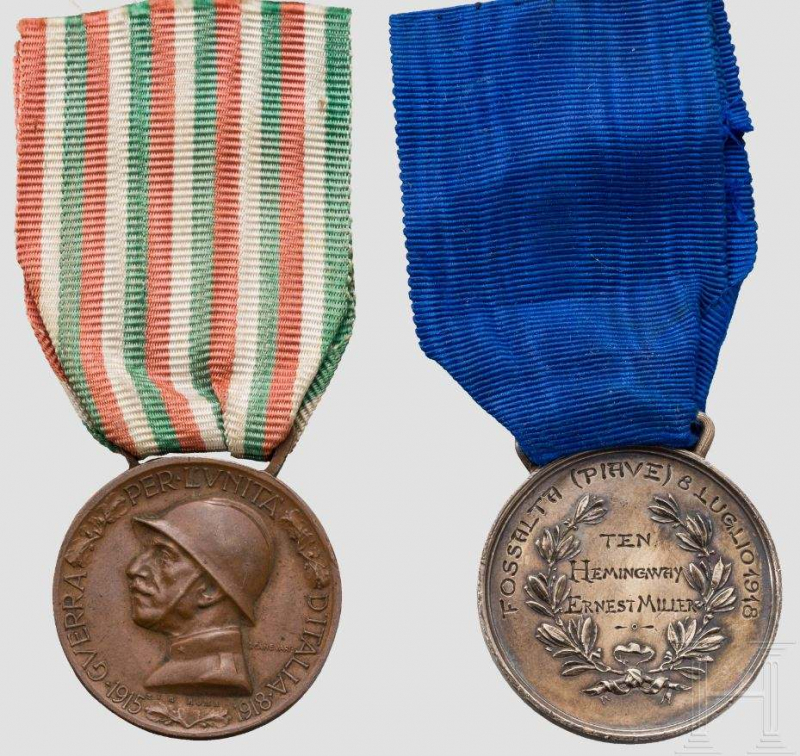
Photo: U.S. Militaria Forum - Ernest Hemingway's medals 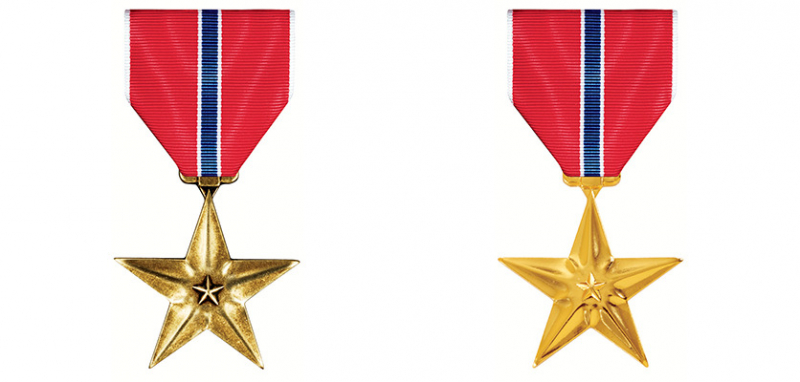
Photo: Medals of America - Bronze Star Medal -
Ernest Miller Hemingway was born in a Chicago suburb, the first son of doctor Clarence Edmonds Hemingway and Grace Hall Hemingway. He was educated in public schools and began writing in high school, where he was active and outstanding, but the summers he spent with his family on Walloon Lake in upper Michigan were the most important parts of his childhood. He did not attend college after graduating from high school in 1917, preferring to live in a less sheltered environment. Instead, he moved to Kansas City. Hemingway graduated from high school and went to work as a cub reporter for 'The Star' in Kansas City. It was his first job after high school, and his writing clearly needed improvement. There's no doubt that the training he received there helped shape him into the legend he became.
He was repeatedly turned down for military service due to an eye defect, but he made it into World War I as an ambulance driver for the American Red Cross. He was injured on the Austro-Italian front at Fossalta di Piave on July 8, 1918, when he was only 19 years old. He fell in love with a Red Cross nurse, Agnes von Kurowsky, who refused to marry him after he was decorated for heroism and hospitalized in Milan. These were memories he would never forget.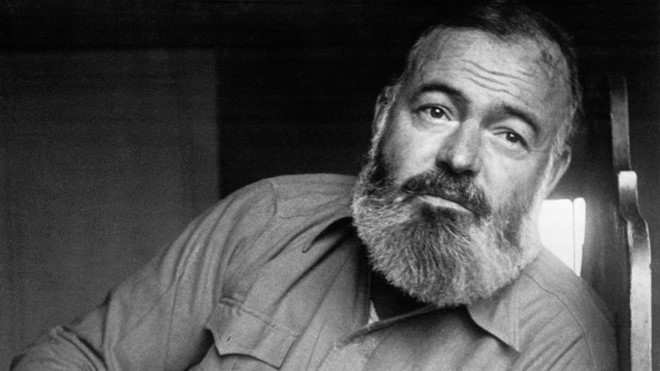
Photo: Vnwriter 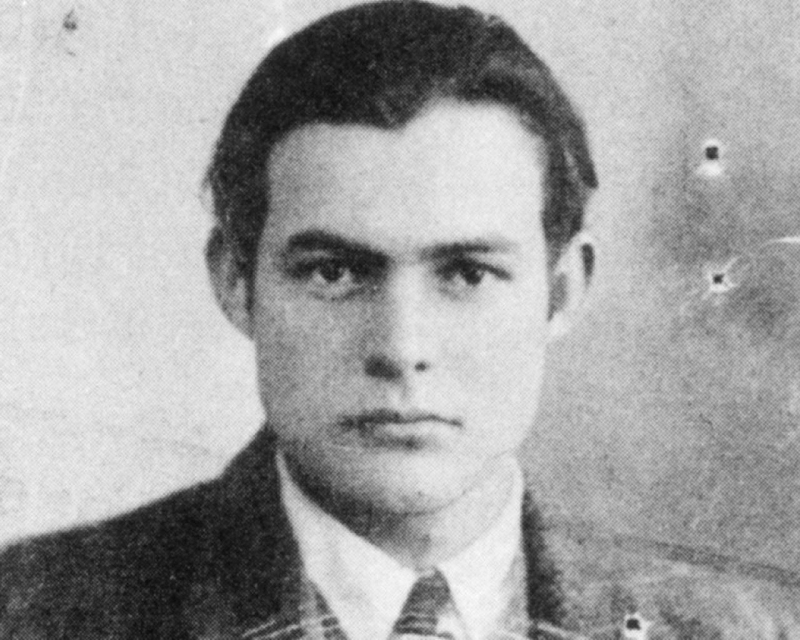
Photo: Toronto Star -
Anyone who has read the passages in "The Sun Also Rises" that discuss that peculiarly Latin sport should not be surprised by Mr. Hemingway's emergence as an authority on bullfighting. Even those who have never seen a matador may concede that he is an authority, based not only on Mr. Hemingway's statement that he has seen fifteen hundred bulls killed on the field of honor and his acknowledgment of indebtedness to some 2,077 "books and pamphlets in Spanish dealing with or touching on tauromania," but also on the internal evidence of the book itself. One could argue that Mr. Hemingway knows bullfighting at least as well as our own country's specialized sports writer knows baseball, football, racing, and fighting. He knows it so well that, on occasion, only the introduction of an unusual old lady as the author's interlocutor, a few digressions on death, modern literature, and sex life, combined with Mr. Hemingway's extremely masculine writing style, save the reader from drowning in a flood of technicalities.
One might wonder why Mr. Hemingway would infer in American readers a strong enough interest in bullfighting to buy and read a book of 517 pages on the subject. However, this would be putting the cart before the horse, or allowing the bull to wave a red cloth at the matador rather than vice versa. Bullfighting, it is assumed, became a hobby for Mr. Hemingway due to the light it casts on Spain, human nature, and life and death. In some ways, this is Ernest Hemingway's "Virgin Spain" book.Hemingway didn't stop there; in 1932, he published a non-fiction book titled 'Death in the Afternoon.' The book is based on the awe-inspiring art of Spanish bullfighting and depicts a more introspective look at the true nature of fear and courage.
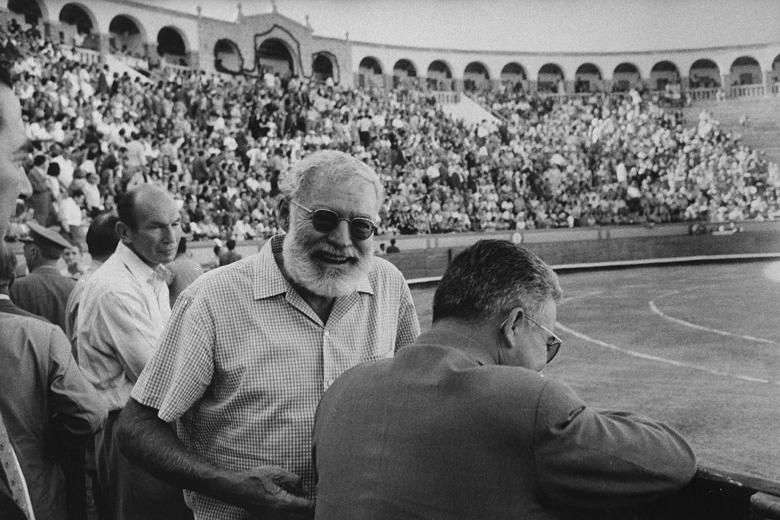
Photo: Taurina – DE SOL Y SOMBRA - Bullfighting, Sport and Industry by Ernest Hemingway (Fortune 1930) 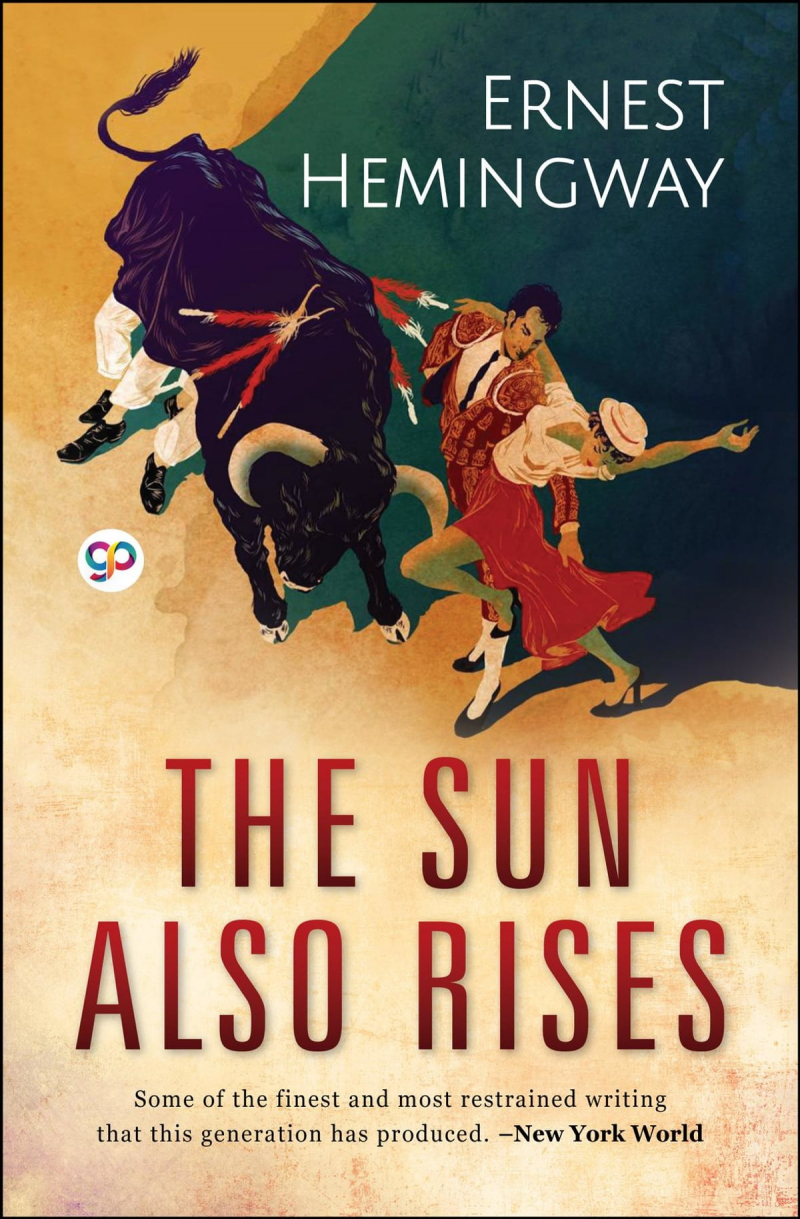
Photo: Kobo.com - The Sun Also Rises ebook by Ernest Hemingway -
It was never in doubt that Hemingway's moving stories would be adapted for the big screen. 'A Farewell to Arms,' a 1932 film, was the first to feature his work. Ernest Hemingway's novel 'A Farewell to Arms' is set during World War I's Italian campaign. It is a first-person account of an American, Frederic Henry, serving as a lieutenant ("tenente") in the Italian Army's ambulance corps. The title is based on a poem written by 16th-century English dramatist George Peele.
Set against the backdrop of World War I, the novel depicts a love affair between an expatriate named Henry and an English nurse named Catherine Barkley. Its publication cemented Hemingway's place as a major modern American writer. The book went on to become his first best-seller and has been described as "the premier American war novel from that debacle of World War I."
The novel has been adapted several times, first for the stage in 1930, then for film in 1932 and again in 1957, and finally for television as a three-part miniseries in 1966. In Love and War, directed by Richard Attenborough and starring Chris O'Donnell and Sandra Bullock in 1996, depicts Hemingway's life in Italy as an ambulance driver prior to writing A Farewell to Arms.
His writing inspired the literary world, and 14 films based on his novels and short stories had already been made by 1996. Phillip Kaufman's 'Hemingway and Gellhorn,' a biopic film about Ernest Hemingway and his journalist wife, Martha Gellhorn, was released in 2012.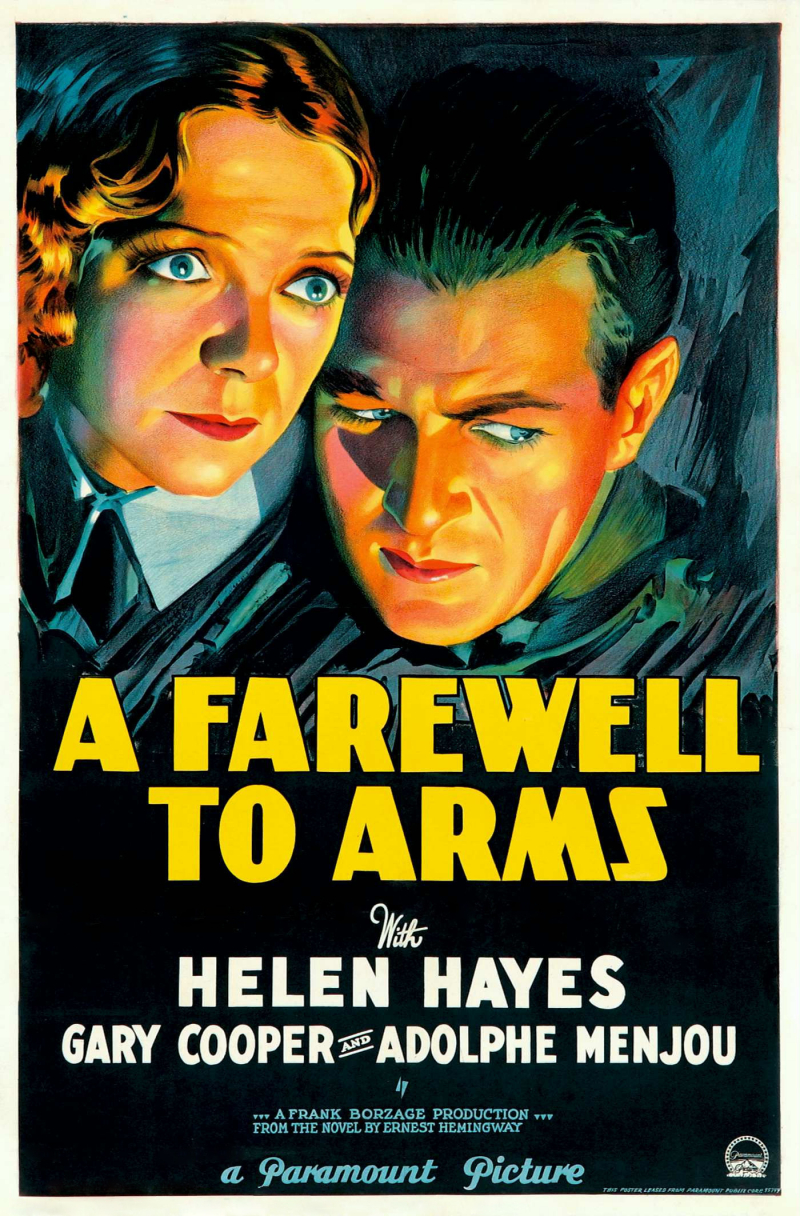
Photo: Wikipedia - A Farewell to Arms (1932 film) Video: Movieclips Indie - Cannes 2012 Hemingway & Gellhorn Official Trailer #1 (2012) -
One fact from the list of interesting facts about Ernest Hemingway is that Ernest Hemingway was married four times:
Hadley Richardson, Hemingway's first wife, was born in Missouri in 1891. In 1920, the couple met at a party in Chicago and married within a year. They first lived in Paris before relocating to Toronto. During their marriage, he allegedly had an affair with Pauline 'Fife' Pfeiffer, who later became his second wife. Hadley died in 1979, at the age of 87.
In 1927, Hemingway married Fife Pfeiffer. Pauline was born in Iowa in 1895 and was known to her friends as Fife. She was a skilled journalist who worked for Vogue in Paris. Fife was well-known for providing feedback on Hemingway's work, including his debut novel, The Sun Also Rises. Hemingway then had an affair with Martha Gellhorn, who became his next wife, similar to what happened with his first wife. Fife died in 1951, at the age of 56.
Hemingway and Martha Gellhorn, his third wife. They married between 1940 and 1945. Hemingway married Martha just 16 days after his divorce from Fife was finalized. Their union, however, would be the shortest of his marriages, lasting only five years. Martha Hemingway was the most career-oriented of Hemingway's four wives. She was a novelist and war correspondent who covered every major international conflict during her six decades as a journalist. She was born in Missouri in 1908. The amount of time she spent away from home while covering the news was one of the factors that contributed to the couple's divorce. Hemingway seemed resentful of this, writing her in 1943, "Are you a war correspondent, or wife in my bed?" Martha died in 1998, at the age of 89.
Hemingway's fourth wife was Mary Welsh. They were married from 1946 to 1961. Mary Welsh, a journalist, was the novelist's fourth and final wife. The couple met in 1944 while they were both married to other people, but they married in 1946. As his mental health deteriorated, the couple relocated to Ketchum. Hemingway committed suicide in 1961, and Mary died in 1968 in New York at the age of 78.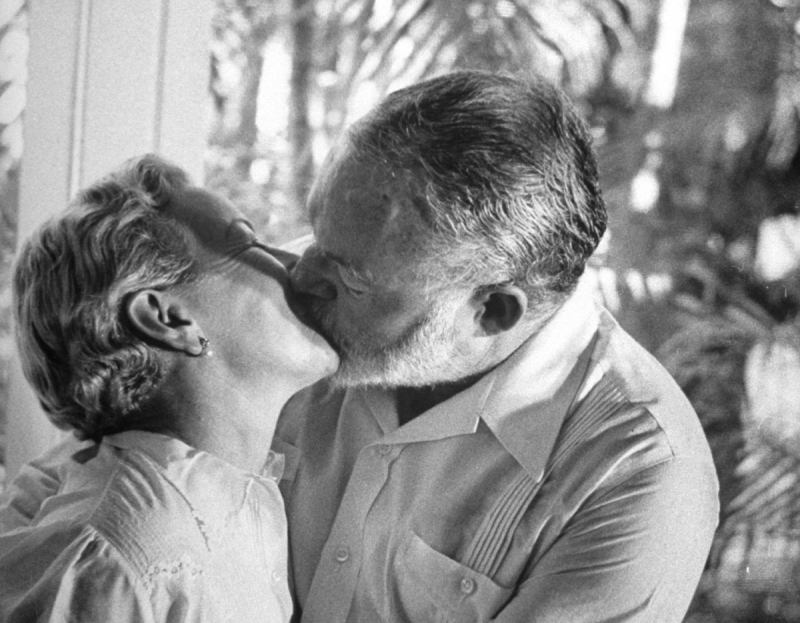
Photo: bio. Biography.com - Mary Welsh and Hemingway 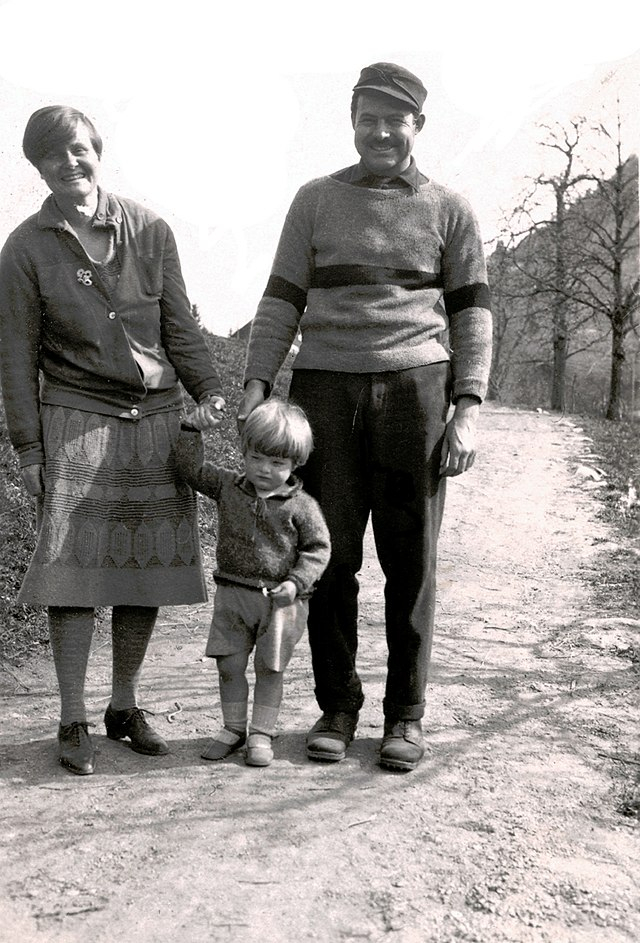
Photo: Wikipedia - Hadley Richardson -
Hemingway advises on how to kill a large animal in a 1935 dispatch for Esquire (titled "On Being Shot Again," and collected in the book By-Line Ernest Hemingway): shoot it in the brain if it's close, the heart if it's far, or the spine if you need to stop it instantly. He was inspired to offer these instructions "because I had just shot myself in the calves of both legs" while attempting to gaff a shark on a fishing trip off Key West, he writes.
Hemingway did not become known as a "literary he-man" without taking some risks in both his art and his life. From the day he was born on July 21, 1899, to the day he died in 1961, He has had many close encounters with death in real life as he assigned to his similarly he-manly fictional characters.
According to TIME, he'd been obsessed with death since confronting it – and nearly succumbing to it – on an Italian battlefield during World War I. Although he died at the age of 61 from a self-inflicted gunshot wound while suffering from several disabling physical and mental illnesses, the idea of facing death at the hands of an enemy soldier or on the horns of a bull had long captivated him and infused his writing. TIME noted in 1961 about Hemingway's concise but vivid prose, "Everything in Hemingway is seen as it might be seen by a man on the day he knew he would die."
Hemingway, true to his larger-than-life fortitude, seemed to court death wherever he went — and to do so with vigor.
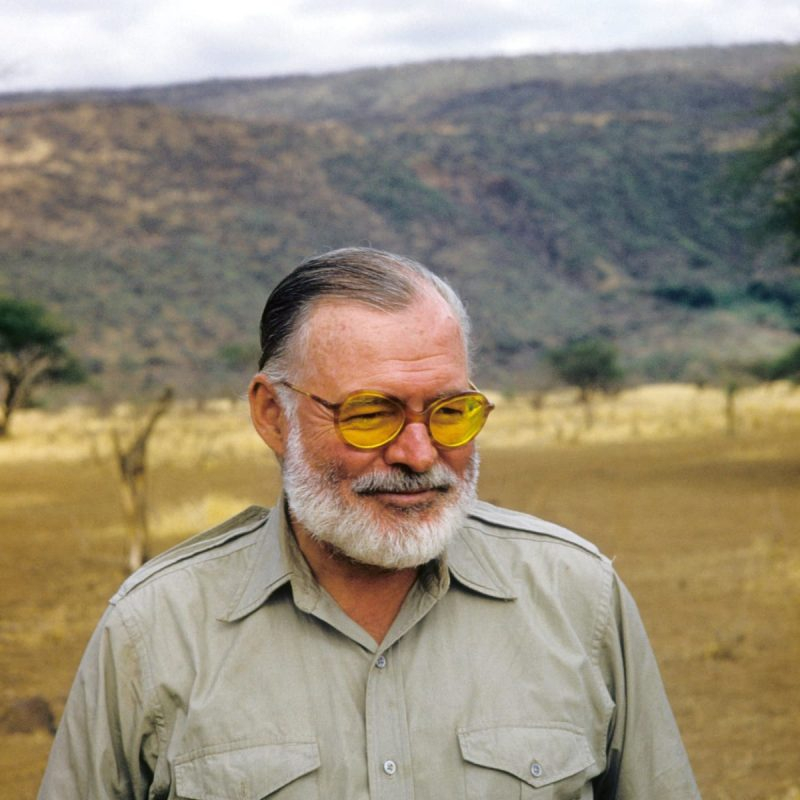
Photo: Revelogue 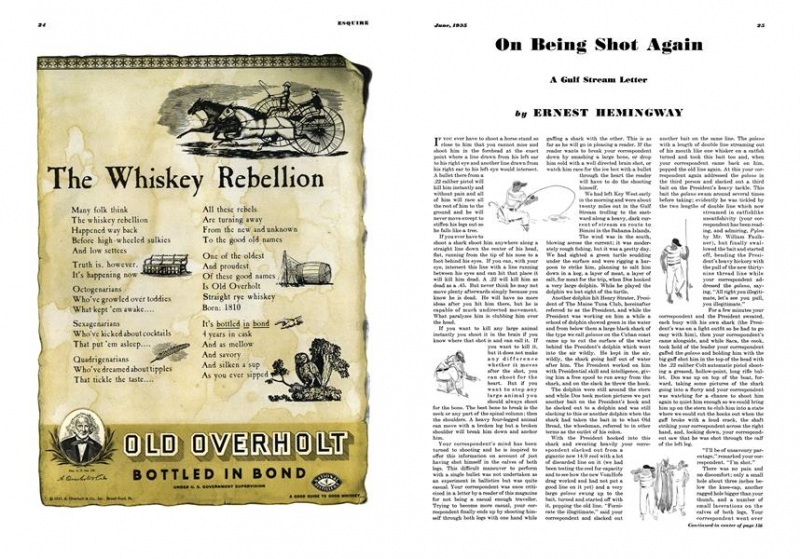
Photo: Esquire Classic - On Being Shot Again -
Certain Soviet records accessed later reveal that Ernest Hemingway agreed to be recruited by the NKVD, the Soviet intelligence agency that predated the KGB. Extracted from Hemingway's Soviet file, translated excerpts show that he was given the code name "Argo" and was recruited by Jacob Golos, a top agent in the NKVD office in New York. Hemingway first came to the attention of the Soviets while covering the Spanish Civil War (1936-1939), and he may have agreed to assist the Soviets because of his strong anti-fascist beliefs. According to the Soviet files, the author did not provide any useful information but "repeatedly expressed his willingness and desire to help us." The fact was also supported by Hemingway's letters, in which he admitted to doing odd jobs for the NKVD.
Hemingway also served as a spy for the Office of Strategic Services, the predecessor to the CIA. He was recruited by the American Embassy in Havana, where Hemingway formed the "Crook Factory," an informal intelligence group. His operatives included bartenders, wharf rats, ex-bullfighters, priests, and exiled counts. His responsibilities included keeping an eye on Spanish citizens in Cuba and looking for links to Franco, Spain's fascist dictator. The agency suspected Spain of attempting to persuade Cuba to join the Axis powers. In April 1943, the Crook Factory's intelligence operation came to an end.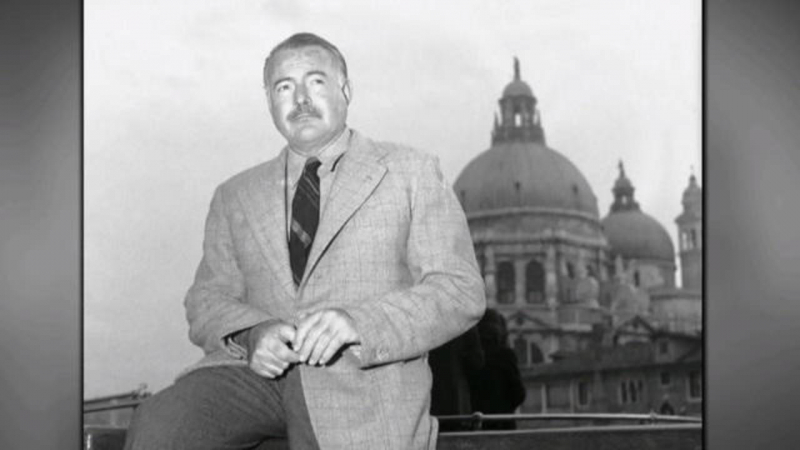
Photo: CBS News - Ernest Hemingway's life as a spy 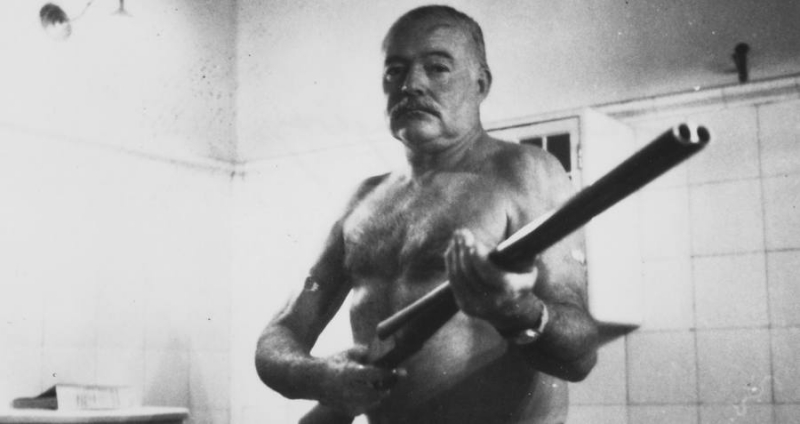
Photo: All That's Interesting - Ernest Hemingway Was A Soviet Spy, Ex-CIA Author's New Book Claims -
Ernest Hemingway was in Paris in August 1944 as a war correspondent for the American magazine Collier's. Hemingway had volunteered for US Intelligence because he wanted to be in the thick of the action. He'd spent a month hurtling between the front lines in a Jeep, making contact with local French Resistance fighters caught between advancing US forces and retreating Germans. The Ritz Hotel in Paris had captivated Hemingway since his days in the city in the 1920s. When Hemingway discovered that the Germans were staying at the opulent hotel, he used his contacts to arrange a meeting with French commander General Philippe Leclerc.
During the meeting, Hemingway asked for enough men to liberate the Ritz, and was surprised when the General dismissed his idea. Hemingway, on the other hand, persisted and arrived at the hotel on August 25, 1944, in a Jeep mounted with a machine gun, heading what he called "Irregular" Resistance fighters. The group was quickly informed that the Germans had long since left, but Hemingway made sure it wasn't for naught and quickly hit the bar. By the time he finished drinking that night, he had reportedly consumed more than 50 martinis.
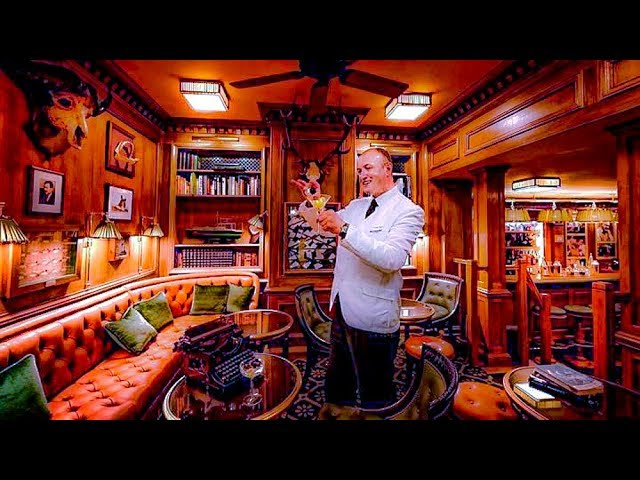
Photo: YouTube - The Bar Hemingway, Hotel Ritz, Paris 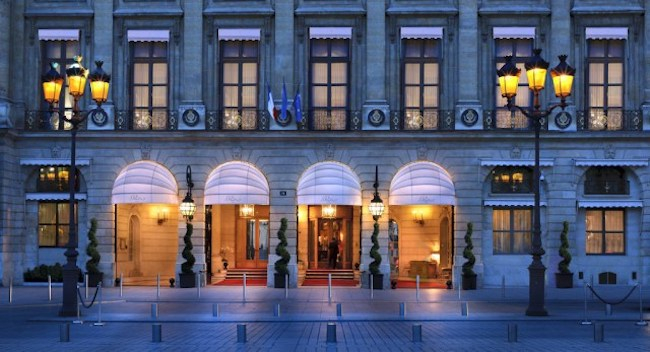
Photo: Bonjour Paris - Ritz Paris











